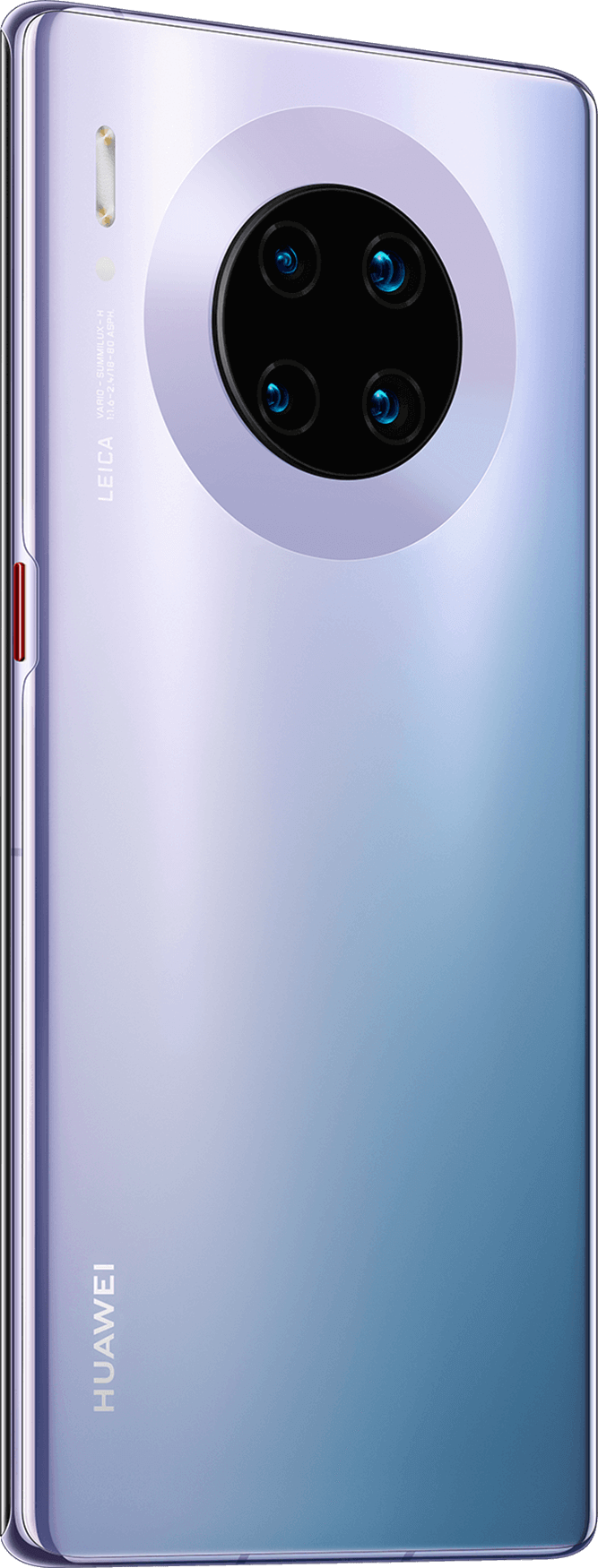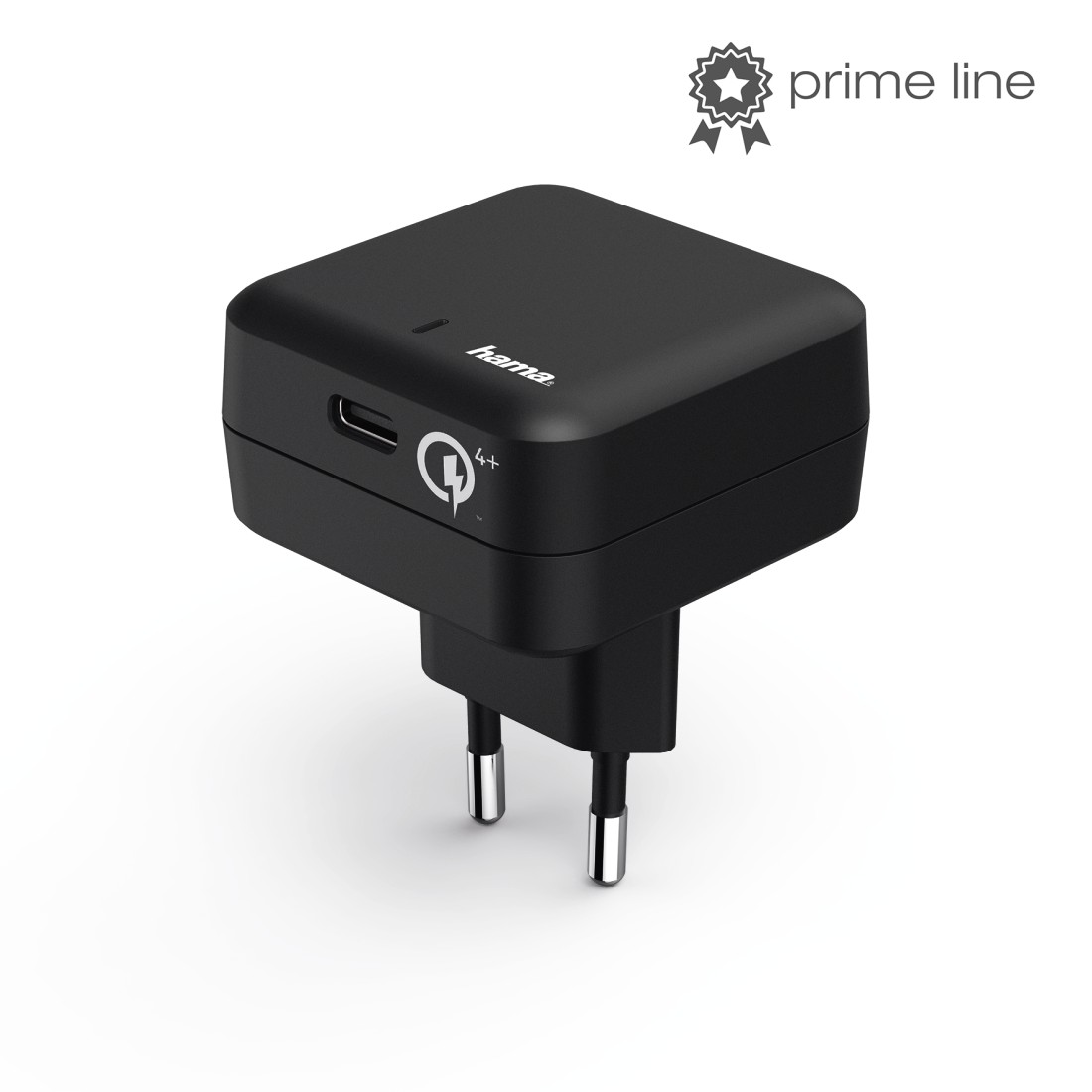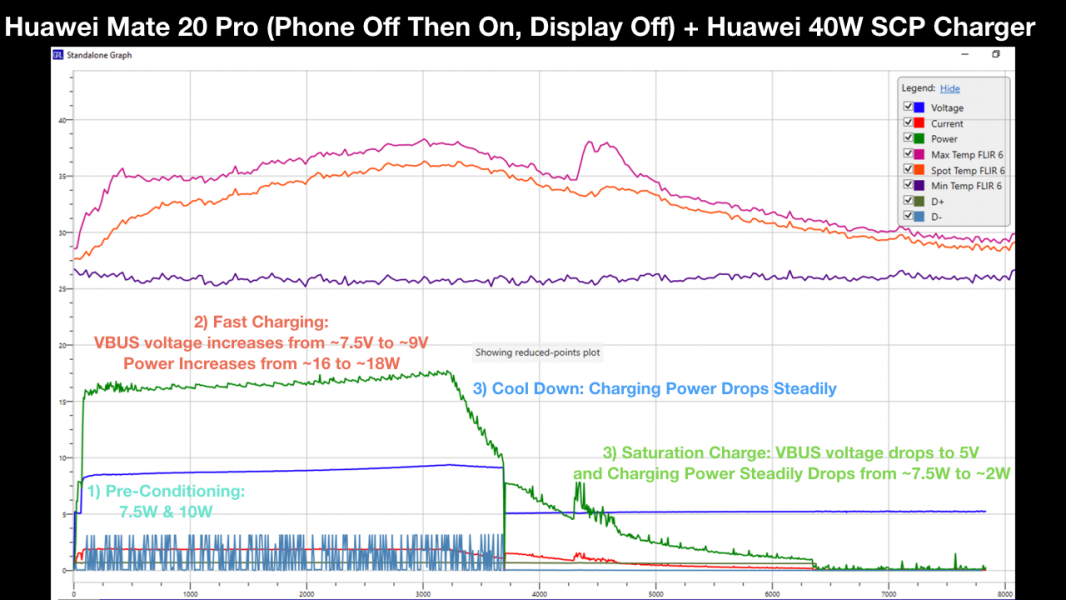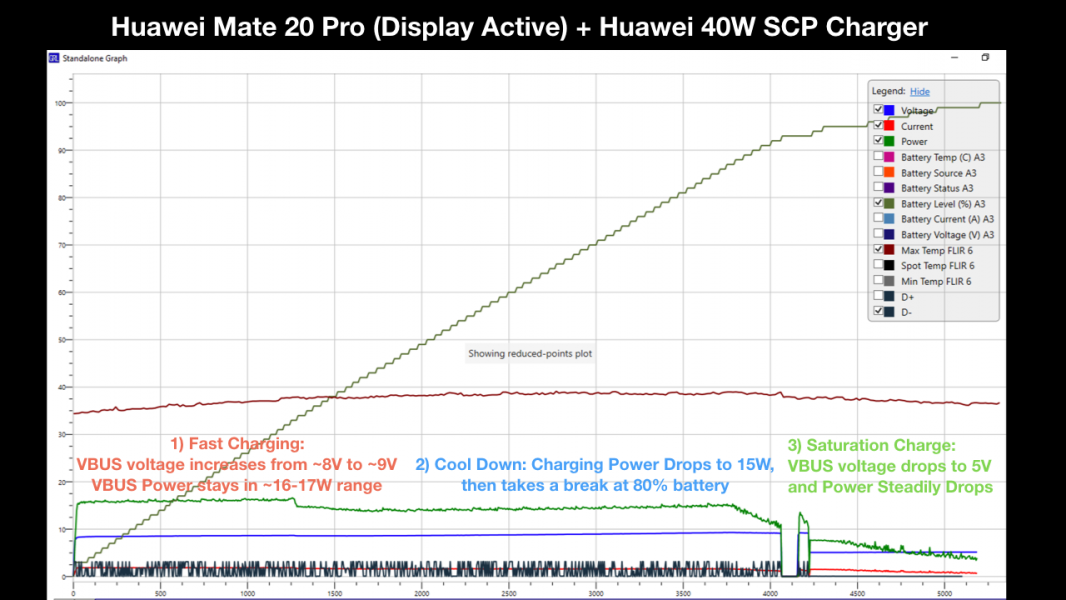The Huawei Mate20 Pro shares a lot of similar charging behavior as the Huawei Mate30 Pro when testing with the Huawei SuperCharge 40W AC Charger and Huawei 15W Wireless Charger.
We use the GRL-C2 USB PD Tester and GRL-PSP Power Analyzer software from Granite River Labs to analyze the details on how the Huawei Mate20 Pro works with the Huawei 15W Wireless Charger and Huawei SuperCharge 40W AC Charger versus the Hama 27W QC4+ AC Charger. Note the Hama charger supports Qualcomm Quick Charge 4+ (QC4+) technology for up to 27W charging.
When the Huawei Mate20 Pro is fully drained and kept off, we connect the phone to the Huawei SuperCharge 40W AC Charger using the Huawei SCP USB Type-A to Type-C cable shipped in-box with the phone. We later turn on the phone when at 2% battery charge but with the display kept off.
The phone initially goes into a “Pre-Conditioning” mode starting at 7.5W before rising to 10W at 5V fixed voltage for a couple of minutes. When entering the “Fast Charge” mode, VBUS voltage goes up from around 7.5V to 9V resulting in an increase in VBUS power from about 16W to 18W. After about 55 minutes the phone proceeds to a “Cool Down” mode, where power steadily drops from around 18W to 7.5W as the VBUS current gets lowered. When the phone finally goes into “Saturation” mode, the VBUS voltage drops down to 5V and stays mostly constant while current gradually gets lowered resulting in power steadily dropping from around 7.5W to 2W until the phone’s battery is 100% full.
We now repeat the same testing and analysis, but this time with the Huawei Mate20 Pro drained to 2% and with the display and WI-FI kept active. Here, we see that during the “Fast Charge” mode, VBUS power stays in around 16W to 17W range while VBUS voltage increases from about 8V to 9V. During the “Cool Down” mode, power drops to around 15W and stays mostly constant except for the few minutes where battery charge level stays at around 90%. This break of charging power resumes after entering "Saturation" mode where power steadily drops as the VBUS voltage drops down to 5V as the battery reaches 100% charge.
Comparing the Huawei SuperCharge 40W AC Charger versus the Hama 27W QC4+ AC Charger on the Huawei Mate20 Pro when the phone is kept on (display and Wi-Fi active), we can definitely see that using the Huawei 40W SCP charger does result in about 50% faster charging than using the Hama 27W QC4+ charger to reach 100% battery charge. Due to the aggressive power management used with the Hama 27W QC4+ AC Charger where current is regularly lowered to reduce temperature results in a longer duration taken to achieve 100% charging.
We now look at the Huawei 15W Wireless Charger and see if the Huawei Mate20 Pro is able to take advantage of the Qi charger's higher 15W power. With the Huawei Mate20 Pro drained to 2% and with the display and WI-FI kept active, we connect the phone to the Huawei 15W Wireless Charger which is connected to the Huawei SuperCharge 40W AC Charger. Here, we see that during the “Fast Charge” mode, the Qi charger consumes around 19W initially but later pulls down to about 13W before going into a “Cool Down” mode. In the "Cool Down" mode, power drops to between 7W and 5W with the Qi charger periodically drops power to reduce temperature. The phone then enters "Saturation" mode only for a short period of time when the battery hits about 95% charge where the Qi charger pulls about 4W. Even after the battery has reached 100% charge, with the display and WI-FI kept active, the Qi charger still continues to consume about 4W.
 GTrusted
GTrusted




























